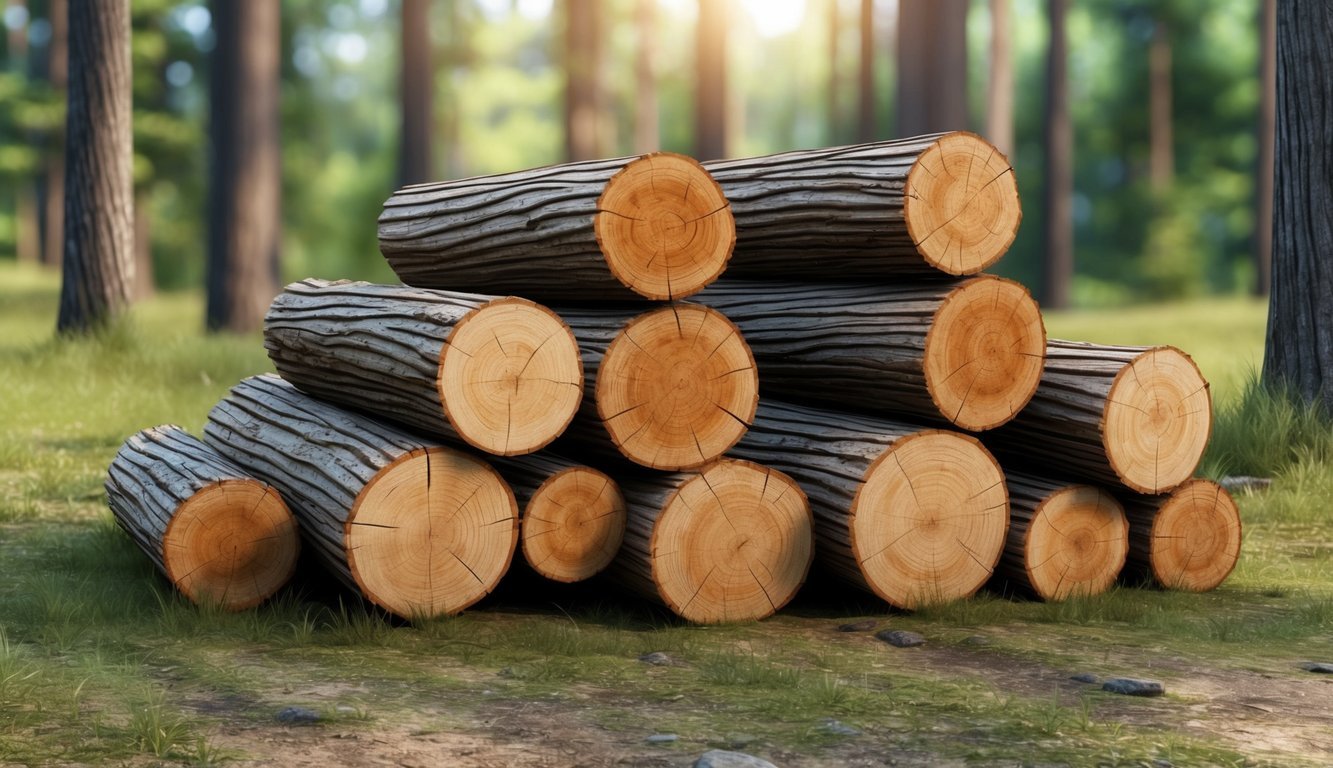The 7 wood has become a valuable addition to many golfers’ bags, thanks to its versatility and ease of use.
If you’re looking for a club that offers significant advantages on the course, this might be the one for you.
The 7 wood provides a unique edge that other clubs often can’t match.
With the ability to hit from the fairway, rough, or even tight lies, this club is a game-changer.
As more professional and amateur golfers integrate it into their play, understanding how to maximize its potential can transform your game.

In recent years, the 7 wood has gained popularity due to its forgiving nature and impressive distance capabilities.
Golfers are discovering its strengths in tackling various course challenges, such as long par 4s and challenging par 3s.
The data-backed and expert tested models show that brands like Ping, Titleist, and Callaway offer exceptional performance.
Choosing the right 7 wood involves considering factors like shaft flexibility, loft angle, and personal swing style.
This club not only fills the gap between long irons and fairway woods but also enhances your ability to manage the game with confidence and precision.
Explore the way a 7 wood can boost your performance and see why it has become a favored club among both seasoned players and newcomers to golf.
Key Takeaways
- The 7 wood enhances versatility on the golf course.
- It offers impressive distance and forgiveness.
- Choosing the right 7 wood can improve your game.
Understanding the 7 Wood
The 7 wood is a versatile club known for its higher loft and ability to provide significant distance and control on the course.
Its unique features make it a valuable addition to your set.
Characteristics of the 7 Wood
A 7 wood typically has a loft angle ranging from 21 to 24 degrees, making it a high-loft club.
This characteristic enhances the ability to launch the ball higher, which is beneficial when trying to clear obstacles or get better accuracy from the fairway or rough.
The club’s design usually provides a larger head compared to long irons, resulting in a larger sweet spot.
This feature can forgive off-center hits, easing the playing experience and making it suitable for a wide range of skills.
Comparing the 7 Wood to Other Fairway Woods
In comparison to other fairway woods, the 7 wood often stands out for its special blend of loft and distance.
While a 3 wood might give you more distance due to its lower loft, the 7 wood offers higher trajectory and greater control.
Its loft is often higher than that of a 5 wood, which translates into more lift and softer landings.
For many players, the 7 wood provides a balance between the reach of a 3 wood and the maneuverability of a short iron, making it a preferred choice on the course for specific shots.
The Place of the 7 Wood in Your Golf Bag
In your golf bag, the 7 wood can act as a reliable replacement for longer irons, which can be challenging to hit consistently for some golfers.
Its versatility allows it to be used from various lies, such as the fairway, rough, or semi-rough.
Given its high loft and forgiving nature, it’s ideal for players who struggle with long irons but still need substantial yardage on longer par 4s or par 5s.
For optimal setup, consider where you need extra forgiveness and adaptability on the course when deciding to include the 7 wood in your equipment lineup.
The Technical Aspects
Understanding the technical aspects of a 7 wood can significantly improve your game.
These include the loft and length of the club, the shaft options available, and how each factor influences the ball flight and trajectory.
Loft and Length
A 7 wood typically features a high loft, usually around 20 to 24 degrees, which allows for better lift and an arching ball flight.
This makes it ideal for getting the ball into the air easily, especially for those with moderate swing speeds.
The club length usually ranges from 41 to 42 inches.
This balance of loft and length creates a club that’s user-friendly yet effective for clearing obstacles and reaching elevated greens or lies.
These features provide the versatility needed on various terrains, offering controllable and consistent shots.
Shaft Options and Flexibility
The shaft of a 7 wood is crucial in determining how the club feels during a swing.
You’ll find shafts made from graphite or steel, with graphite being lighter and often preferred for its ability to enhance swing speed.
The flexibility of the shaft affects the club’s performance.
Options range from extra stiff to regular and senior flex, accommodating different swing speeds.
An adjustable hosel may be present in some models, allowing you to tweak the loft and lie angles for a tailored fit.
This adaptability lets you optimize your setup according to specific course demands or personal swing characteristics, ensuring every shot counts.
Ball Flight and Trajectory
The design of a 7 wood encourages a high launch angle, helping you achieve a pronounced ball flight.
This is particularly advantageous for players looking to achieve more height on their shots without sacrificing distance.
The club’s large head and increased loft promote a soft landing on the greens, which is essential for approaches requiring precision.
By customizing your shaft selection and understanding your swing tendencies, you can further refine your ball trajectory.
Knowing these aspects enables you to make strategic choices about when to use your 7 wood, enhancing your play with increased accuracy and confidence.
Playing With a 7 Wood

The 7 wood offers versatility on the golf course, making it an excellent tool for various types of shots.
Whether you’re deciding when to use this club or improving your performance with specific techniques, understanding its benefits can enhance your game.
When to Choose a 7 Wood
A 7 wood is particularly useful when you’re looking to hit shots that require a combination of distance and precision.
It’s ideal for hitting from the rough, as its design helps you navigate tricky lies and maintain control.
On the fairway, this club offers an excellent balance of forgiveness and launch, making it easier to achieve a consistent ball flight.
If you’re strategizing your approach to the green, it can hold the green effectively due to its higher launch and increased spin.
Improving Your Stance and Swing
Proper stance and swing mechanics are crucial when using a 7 wood.
Position the ball slightly forward in your stance to promote a higher trajectory.
Your feet should be shoulder-width apart to provide stability.
Focus on a smooth tempo, which aids in maintaining control and balance throughout the swing.
Weight transfer during the swing should be fluid, moving from your back foot to your front foot. Keep your eyes on the ball at impact for solid contact.
Regular practice with the correct stance and swing will increase your confidence and consistency with this club.
Tactics for the Tee and the Fairway
On the tee, your 7 wood can be a reliable option if you aim for accuracy over raw distance.
It excels when playing shorter par 4s or when you need a safe and accurate shot.
For setups, keep the ball teed slightly lower than you would for a driver, ensuring cleaner contact.
In fairway play, this club excels in versatility.
It allows you to navigate between tight lies and fairway bunkers effectively.
When executing shots from a fairway bunker, position the ball in the middle of your stance and focus on steady balance to avoid digging into the sand.
This approach enhances the likelihood of a successful shot, maintaining both distance and accuracy.
Choosing Your 7 Wood

Selecting the right 7 wood involves considering several factors, including brand preferences, features that match your skill level, and personal customizations.
These aspects will help ensure the club complements your golf game.
Brand Comparisons
When comparing brands, you might find that manufacturers like Ping, TaylorMade, and Callaway offer various advantages.
Ping G425 is known for its forgiveness and high launch, making it an excellent choice if you struggle with mishits.
Meanwhile, the TaylorMade Stealth focuses on speed and distance due to its advanced technology.
If you’re after versatility, Callaway Rogue provides a balanced approach with its lightweight design.
Evaluating these options helps match your 7 wood to your playing style.
Features for Different Skill Levels
Consider the features tailored to your skill level when choosing a 7 wood.
Beginners might appreciate a club with increased loft for easier ball launch, which can enhance confidence.
The Ping G425 fits this need well due to its forgiving nature.
Intermediate players might prefer features that help optimize distance while maintaining control, like the TaylorMade Stealth with its advanced aerodynamics.
For advanced golfers, a club offering precise control and shaping capabilities, such as the Callaway Rogue, could be ideal.
Selecting the right features ensures the club fits your game and skillset.
Customizations and Personal Preferences
Customizations and personal preferences can significantly impact your satisfaction with a 7 wood.
Adjusting the shaft flexibility, for example, might improve your swing.
You can opt for a stiffer shaft if your swing speed is higher, or a more flexible shaft if you need to boost momentum.
Your grip size also matters; a comfortable grip can enhance your control.
Brands like TaylorMade offer customization options, allowing you to modify aspects to better fit your playing style.
Considering these personal adjustments helps you achieve the best performance.
The Role of the 7 Wood in Modern Golf

The 7 wood has become an essential club in the bags of many golfers, offering versatility and favorable performance on the course.
In professional play, it provides solutions for challenging course conditions and enhances shot-making capabilities.
7 Wood in Professional Golf
In the professional realm, the 7 wood is celebrated for its adaptability.
Tour players like Dustin Johnson and Tommy Fleetwood utilize this club to tackle high-pressure situations on the course.
Its loft, generally ranging between 21 to 24 degrees, allows for remarkable height and control, making it ideal for long approach shots.
This wood is particularly effective in escaping difficult lies.
Many pros reveal its effectiveness when hitting from rough or tight fairways, providing a reliable option to navigate varying terrains.
Its strategic placement in a golfer’s bag underscores its importance in producing consistent shots, especially when long or accurate hits are required.
Trends and Popularity
The 7 wood has seen increased popularity among both amateurs and pros, attributed to its user-friendly design and versatility.
Its ability to launch the ball higher makes it a favored choice for those seeking to clear obstacles confidently.
With its rise in use, manufacturers have designed new models to cater to diverse golfer needs.
Statistics show an uptick in usage across all levels, especially within the PGA Tour.
This shift also stems from the club’s capacity to target distances between 180 to 210 yards for men and 140 to 170 yards for women.
These improvements assist players in bridging the gap between a fairway wood and a long iron.
Case Studies: Tour Players and Their 7 Woods
Several tour professionals have successfully integrated the 7 wood into their arsenal. Jason Dufner uses it for its accuracy, especially on courses with tight fairways.
This choice enhances his strategy by delivering consistent performance during critical rounds.
Tommy Fleetwood appreciates the club’s versatility and often employs it in the challenging links conditions found in European tournaments.
The reliable loft and larger head help manage long-range shots efficiently, providing a competitive edge.
These case studies highlight how top players leverage it to gain an advantage in their gameplay.

